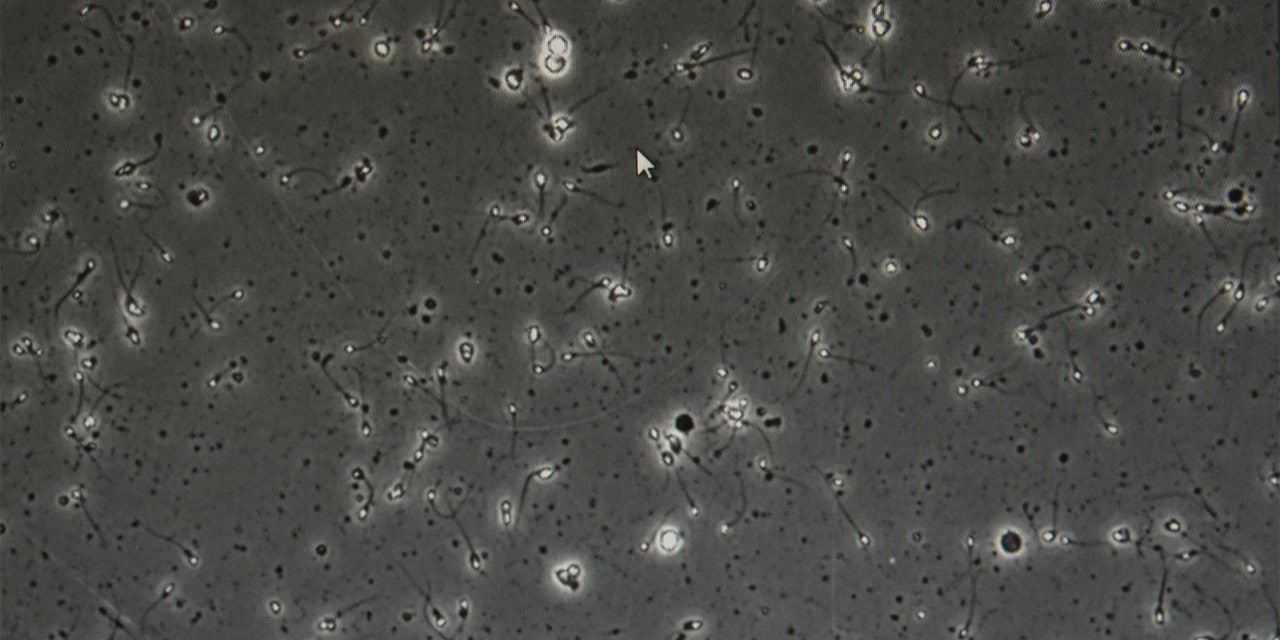The first step in determining whether a man has fertility problems is to carry out a semen analysis. You may have heard of this test before. It is a simple and widely used test that involves collecting a semen sample to analyse several parameters: volume, sperm concentration, motility, and morphology.
In most cases, this is sufficient to detect any abnormalities. However, 15% of infertile men present with semen parameters that fall within the ‘normal’ range according to the World Health Organisation (WHO). This is because, in addition to abnormalities in the parameters assessed by a standard semen analysis, other factors can also cause infertility, such as hormonal imbalances, testicular issues like varicocele, structural or functional problems in the reproductive system (such as absent or blocked ducts), or medical conditions that impair sperm production.
Among the lesser-known causes are genetic abnormalities and sperm DNA fragmentation. The latter refers to breaks or damage in the DNA strands that make up the genetic material of sperm. These breaks can compromise both the quality and function of the sperm.
Although it may seem surprising at first, sperm DNA fragmentation is more common than generally assumed. Multiple studies have shown that infertile men have higher levels of sperm DNA fragmentation compared to fertile men, which may reduce the chances of achieving pregnancy spontaneously and impact the success of assisted reproductive technology (ART).
That being said, there are cases where men with high levels of sperm DNA fragmentation are still able to conceive and have healthy children. In fact, if the egg is of good quality, it can sometimes repair these strand breaks in the sperm DNA to a certain extent, increasing the chances of a successful outcome.
What causes sperm DNA fragmentation?
There are several possible causes of sperm DNA fragmentation: infections, episodes of high fever, certain medications, exposure to environmental pollutants, smoking, oxidative stress at the cellular level, and advanced paternal age (over 45 years old).
‘In most cases, this issue can be effectively addressed, as fragmentation can be reversed through lifestyle changes, antioxidant treatments, or even simply by shortening the period of sexual abstinence’, explains Marta Ballester, Head of the Andrology Laboratory at Dexeus Mujer. At our Andrology Laboratory, we also have advanced sperm selection techniques that help identify sperm cells with lower fragmentation levels.
If there is no significant improvement despite these measures, performing a testicular biopsy may be considered. This involves retrieving sperm directly from the testicle, which typically shows lower fragmentation levels compared to ejaculated sperm. These sperm can then be used in an intracytoplasmic sperm injection (ICSI) procedure as part of an in vitro fertilisation (IVF) treatment.
Diagnostic techniques
To assess whether a semen sample shows high levels of DNA fragmentation, several diagnostic techniques are available. At our clinic, we use the Sperm Chromatin Dispersion (SCD) test and the COMET assay.
The SCD test is a quick and simple method for determining the overall level of sperm DNA fragmentation. The COMET assay, on the other hand, provides a more detailed analysis by identifying the percentage of fragmentation based on the type of DNA break: either single- or double-stranded. Single-strand breaks are associated with reduced chances of natural conception, while double-strand breaks are linked to a higher risk of miscarriage and, in IVF treatments, to lower embryo quality. ‘Distinguishing between the types of DNA damage, either single or double-strand breaks, allows us to tailor treatment more effectively’, adds Marta Ballester.
At Dexeus Mujer, we have a dedicated unit for male sexual health and our own Andrology Laboratory, which works closely with our IVF Laboratory and the Reproductive Medicine team. This coordination streamlines both testing and diagnosis, facilitating faster access to treatment. We also offer a couple’s fertility assessment, which allows for a more comprehensive evaluation in cases of infertility.
We hope you’ve found this post useful.
If you would like more information or wish to book a consultation, please contact our Men’s Health Unit.















